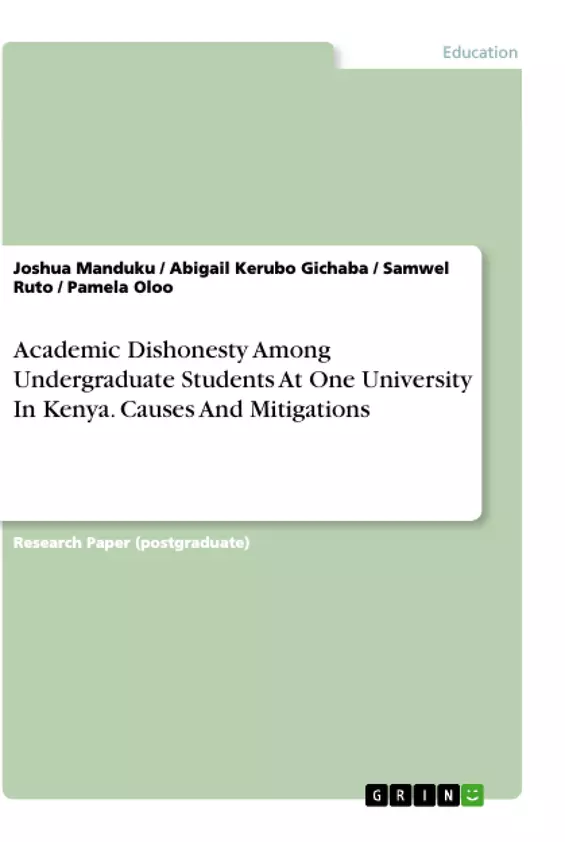Recent empirical studies indicate that cheating by college students is prevalent in many countries. More is known about the pervasiveness of college cheating than reasons why students cheat and how the vice can be mitigated. This article presents findings of a study that attempted to explore academic dishonesty among undergraduate students at One University in Kenya. The study employed stratified random sampling technique to obtain 200 student respondents from the Main and the Town campuses of One University in Kenya. The strata were the various schools/faculties at the University. The study was conducted between the months of June and July in 2017. Grounded on the Theory of Reasoned Action, the study focused on establishing the methods used by students in cheating in examinations, the reasons as to why the students cheat in examinations and suggesting ways in which this vice can be minimized. Data were collected by the use of a students’ questionnaire. Partial least squares methodology was used to analyze the responses of students.
Inhaltsverzeichnis (Table of Contents)
- Introduction
- Statement of the Problem
- Purpose of the Study
- Objectives of the Study
Zielsetzung und Themenschwerpunkte (Objectives and Key Themes)
This study investigates academic dishonesty among undergraduate students at One University in Kenya. The research aims to identify the methods students use to cheat, understand the underlying reasons for this behavior, and propose ways to mitigate academic dishonesty at the university.
- The prevalence and forms of academic dishonesty among undergraduate students.
- The motivations and factors influencing students' decision to cheat in examinations.
- The impact of academic dishonesty on the integrity of education and the institution.
- Effective strategies for preventing and minimizing academic dishonesty at the university level.
- The role of institutional policies and support in addressing academic dishonesty.
Zusammenfassung der Kapitel (Chapter Summaries)
- Introduction: This chapter defines academic dishonesty and its various forms, providing a historical overview of cheating trends and highlighting the increasing prevalence of academic misconduct among college students. It emphasizes the need to understand the motivations behind cheating to effectively address this issue.
- Statement of the Problem: This chapter presents the current state of academic dishonesty at One University in Kenya, referencing alarming statistics and cases of academic misconduct reported by the university. It discusses the societal factors contributing to academic dishonesty and underscores the need for ethical education and academic integrity.
- Purpose of the Study: This chapter clarifies the objective of the study, focusing on examining the reasons why undergraduate students cheat and exploring potential solutions to mitigate this practice.
- Objectives of the Study: This chapter outlines the specific objectives of the research, including identifying cheating methods, exploring motivations, and suggesting strategies for minimizing academic dishonesty at the university.
Schlüsselwörter (Keywords)
This study focuses on key themes such as academic dishonesty, cheating, ethical behavior, student misconduct, and the Theory of Reasoned Action. It explores the motivations behind student cheating and investigates ways to promote academic integrity through institutional policies and support.
- Quote paper
- Joshua Manduku (Author), Abigail Kerubo Gichaba (Author), Samwel Ruto (Author), Pamela Oloo (Author), 2021, Academic Dishonesty Among Undergraduate Students At One University In Kenya. Causes And Mitigations, Munich, GRIN Verlag, https://www.hausarbeiten.de/document/1135204


